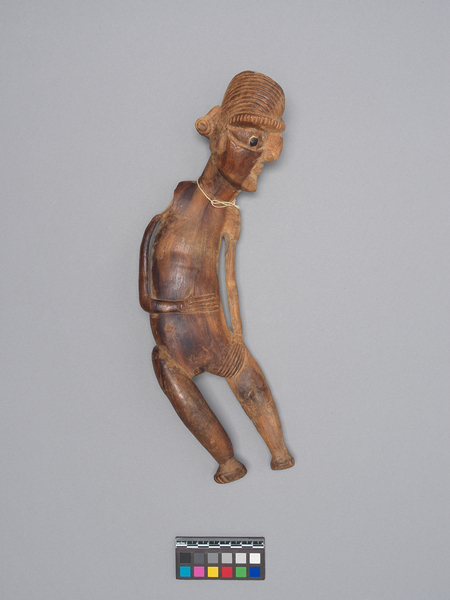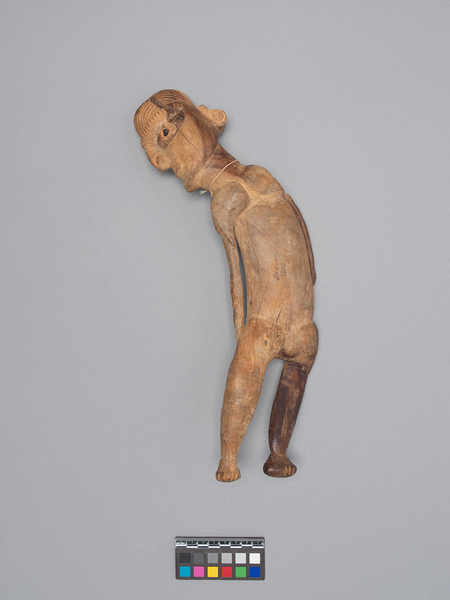Figure Item Number: 3487/1 from the MOA: University of British Columbia


Description
Carved wooden figure depicting a standing woman. Her head is shown in profile and is facing down. She has a long, oval-shaped face with pronounced eyebrows and lips, and a long, wide nose. Her eyes are circular and inlaid with bone and obsidian. There are incised lines across her head, imitating hair, that extend into two buns, protruding from the back of her head. The figure’s body is flat and curves towards the left. Legs have a curved front and flat back. Feet are circular and have incised lines along the front edges, imitating toes. Her right arm is bent with her hand resting on her stomach. Her left arm is parallel to her body, with her hand resting near her groin. On the back of the figure, her shoulder blades and buttocks are carved in low relief. She has a white string knotted around her neck. Inscription on the centre of her back, reading "Soquel 1909."
Specific Techniques
Rapa Nui's tree population was sparse, so this figure was likely made from a naturally curving branch. The wood used is probably from the toromiro tree, which is now extinct in the wild.
Narrative
These two figures (3487/1-2) came to the McKay family from a crew member of the 'Soquel'--a ship that was wrecked on Seabird Rocks, off the west coast of Vancouver Island, in January 1909. Doris McKay's great-grandfather lived in Bamfield at the time, and was part of the rescue team. The ship was sailing with ballast from Callao, Peru, where it is thought a crew member likely acquired the two figures.
Item History
- Made in Easter Island before 1909
- Owned by Donald McKay before March 28, 2021
- Received from Donald McKay (Donor) on March 28, 2021
What
- Name
- Figure
- Identification Number
- 3487/1
- Type of Item
- figure
- Material
- cotton fibre, wood, bone and obsidian stone
- Overall
- height 35.4 cm, width 15.7 cm, depth 6.8 cm
Who
- Culture
- Rapa Nui
- Previous Owner
- Donald McKay
- Received from
- Donald McKay (Donor)
Where
- Holding Institution
- MOA: University of British Columbia
- Made in
- Easter Island
When
- Creation Date
- before 1909
- Ownership Date
- before March 28, 2021
- Acquisition Date
- on March 28, 2021
Other
- Item Classes
- carvings & sculpture
- Condition
- fair
- Accession Number
- 3487/0001